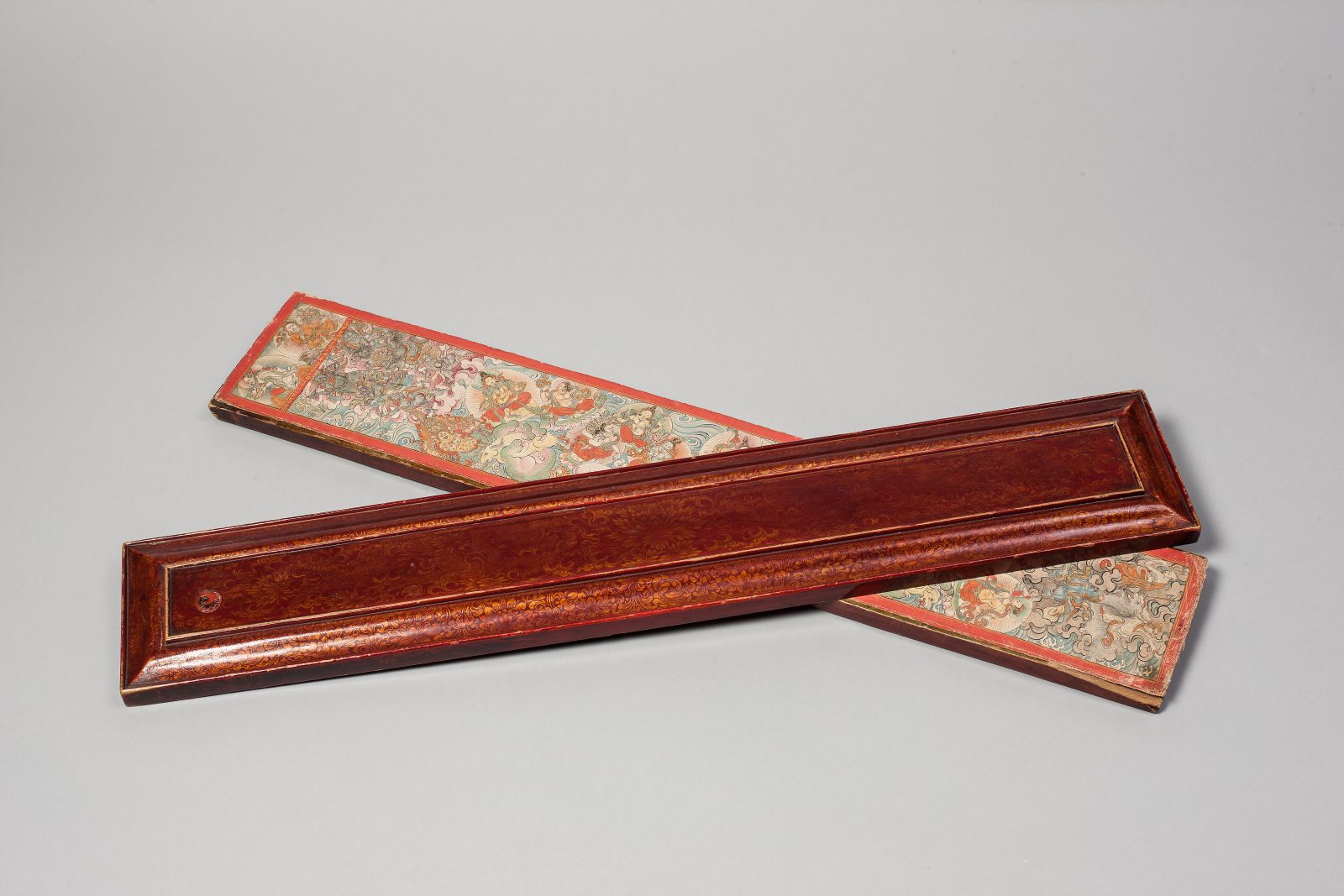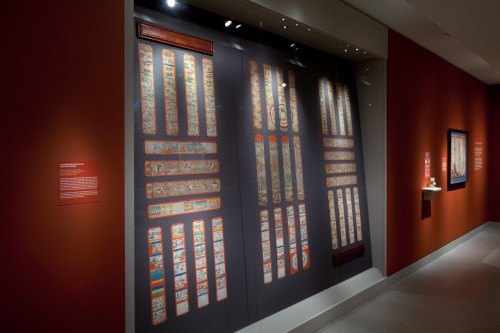
Illustrated White Beryl Elemental Divination Manuscript; Sakya Monastery, Tsang region, Central Tibet; mid-18th century; Pigment on cloth; Rubin Museum of Himalayan Art; C2015.7

Illustrated White Beryl Elemental Divination Manuscript; Sakya Monastery, Tsang region, Central Tibet; mid-18th century; Pigment on cloth; Rubin Museum of Himalayan Art; C2015.7
In 2015 the Rubin acquired a one-of-a-kind, illustrated, eighteenth-century manuscript painted by the famous artist Sonam Peljor. This addition made Rubin Museum’s collection the world’s foremost holding of art related to Tibetan astrology and cosmology.
Created in Sakya, Tibet, this elaborate manuscript contains 94 exceptional illustrations of the Tibetan system of elemental divination known as The White Beryl astrological treatise. The intricate paintings in this White Beryl manuscript are especially significant, as no other fully illustrated version of the treatise exists.

Installation photograph of the White Beryl manuscript from Bodies in Balance: The Art of Tibetan Medicine (on view at the Rubin Museum March 15–September 8, 2014) by David De Armas.
Tibetan Astrology and The White Beryl
The Tibetan astrological tradition is actually the accumulated knowledge of many different traditions, including ancient Tibetan tradition, Chinese elemental astrology, Indian astrological systems that incorporate elements of Western astrological knowledge, and the Buddhist Kalachakra (Wheel of Time) Tantra. All of these elements were compiled into one comprehensive system in The White Beryl treatise by the regent to both the Fifth and the Sixth Dalai Lamas, Desi Sangye Gyatso (1653–1705).
These traditions were designed to offer prognostications ranging from geomancy to natal charts to marriage, health, and death horoscopes, in addition to explanations of the structure of the universe and the elemental relationships between worlds, human beings, celestial movements, and the seasons. It is a system of assessing and affecting the environment that is still practiced today. Learn more about Tibetan astrology.
The History of the Manuscript
The White Beryl manuscript paintings were created by a master artist commissioned by the Sakya court in the early to mid-eighteenth century. The manuscript came to light in the late 1980s and was acquired by London collector Sam Fogg, who, in partnership with John Eskenazi, supported research and a subsequent major publication of the manuscript.
Gyurme Dorje, a renowned British scholar of Tibetan Buddhist texts, researched the sources of the manuscript and the content of the images in consultation with Tibetan scholars of history, astrology, and divination, resulting in a beautiful and weighty (19.4 pounds), 432-page, oversized tome published in 2001 and 2008 by Paul Holberton Publishing.
Get the latest news and stories from the Rubin, plus occasional information on how to support our work.